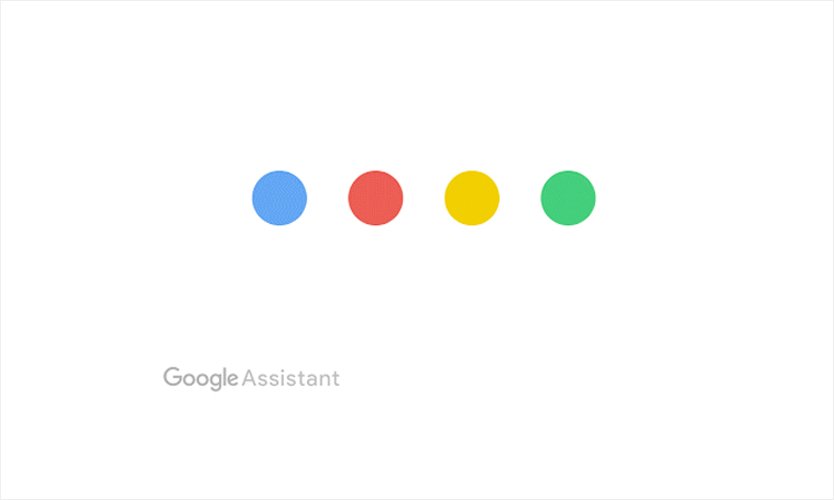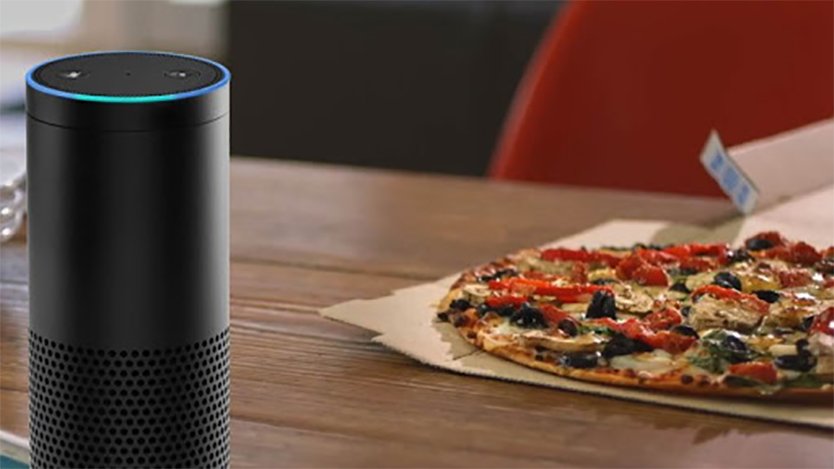Voice User Interfaces (VUI) are the primary or supplementary visual, auditory, and tactile interfaces. These interfaces enable interaction between people and smart devices. VUI can be anything from an air conditioner that turns on when it hears your voice command to an automobile console.
One point that you must carry with you while reading this article, VUI doesn’t require a visual interface — it can work with audio or even vibration.
Volkswagen announced an upgrade to its VW Car-Net mobile app. The upgrade enables iPhone users to control their Golfs and Jettas with Siri commands.
iPhone users on iOS 12 can just go on and say, “Hey, Siri” to lock and unlock their vehicle. They can also check the estimated remaining range, flash their warning lights, and ‘hoot the horn’. You can also add Shortcuts to Siri with personalized phrases to start/stop charging, defrosting, and climate controls; set the temperature; and even ask, “Where is my car?”.
Did you just go, “Yayy! This is so much exciting?”
The decade that was!
When people talked about user experience, it revolved around the placement of buttons or the aesthetics of the interface. Usability and friendliness of the UI always contributed towards making the task of using digital product simpler.
The decade has seen so many advancements in terms of UI but never ever did anyone think that AI voice assistants will play such an important role in enhancing user experience.
The past 10 years have seen great inventions in the area of voice synthesis. The modern Google assistant is even more human as far as tonality at the ending sentences goes. Speech recognition has become way more better with various advancements in text-to-speech.
Speech recognition based on the machine learning factor still needs to go a long way, till people have their own “Friday” or “Jarvis”. Yes, I just gave an Iron Man reference!
The focus of machine learning still is on words, speech recognition hears what you’re saying and converts it into text. Based on your voice input the machine reverts, yet it fails to detect the tremble, enthusiasm, sorrow or assertiveness in your voice.
There was a time when even assistants needed users to type in the command to perform certain actions. Then they started evolving based on the commands that were being typed in. The next phase involved users giving voice commands and man they were a mess. I have made so many missed calls to Mac and Mack. The assistant even failed to understand the pronunciations and make a blunder of the commands given to it.
Today, however, these assistants are evolving by learning and studying your usage patterns. I had myself asked Siri to set a reminder for writing this article. And she created it without any fumble at the designated time. She is making me lazy these days, to be honest.
What’s happening across the Globe?

Automobile giants are collaborating with technology companies to develop autonomous cars.
As per researchers, 2019 is the year of development for the AI assistant.
AI assistants coupled with machine learning and the proper alignment of the annotations become powerful and useful tools.
AI assistants are going to be everywhere possible, not just be limited to your home or pocket.
Companies such as Kia and Hyundai are already making a breakthrough by including assistants in their vehicles in 2019.
We are sure Google, Apple, and Amazon will continue the advancements in their AI assistants and make the customers’ lives easier.
Voice-controlled devices, such as the Apple HomePod, Google Home, and Amazon Echo, have already made their mark and with better integrations will touch every industry in the coming years.
Voice user interfaces are improving themselves with human inputs and machine learning. This will provide a better and unique user experience.
So, what do normal human beings use their smart assistant for?
UX holds a special place in any product or service’s adoption by the user. In a way, UX is more important than UI, with UI being the contributor towards the enhanced UX. This is where VUI enters and conquers! Imagine a machine that learns, adapts, and then does your work while making the human-machine interaction easier and fun!

From our experience as a digital product development organization, we know for sure that smart assistants are used for
- ordering their basic grocery needs
- checking the weather
- setting or canceling alarms
- booking a plane ticket
- finding a crucial date in their calendar
How to provide that “wow” user experience with voice user interface?
No matter how much advancements come through, humans will always want that personal touch, even while giving commands to their smart devices. Be it a “double clap” gesture to turn lights on or off, or setting a more personal command than “Hey Google” or “Hey Siri”.
The AI assistant’s rise in usage and popularity

One in ten households in the US already own a smart speaker today. — ComScore
How often does a normal human being use the AI assistant and ask it to do something using voice commands?
While writing this article, I asked my Google Assistant to make a phone call to my manager, send a WhatsApp message requesting a work from home, and play songs on my phone. My Google assistant has helped me place my lunch order and updated me about my meetings and the daily traffic specifications.
There are simpler tasks that once needed manual input from us. It's only the beginning of a better and labor-free tomorrow.
With enough investment, the future is not so far away when people will start using assistants for daily operational tasks like;
- searching the internet
- reading emails
- responding to crucial communications
- and ordering products
Human-computer interactions are shifting to conversation, yet users will keep expecting more. Modern AI systems are limited to Narrow AI — systems that use Machine Learning to solve a clearly defined problem. Narrow AI’s don’t have knowledge outside their training data.
Once developers have key users and use cases, you must create a persona (the voice) for interacting with your end users.
Here are some examples of persona notes:
Comforting tone
An assistant must be like a comforting friend, not a robotic assistant.
Friendly
A subtle and friendly voice that doesn’t startle the user.
Understanding
Users can be from any age group. Elderly people sometimes have a tough time processing fast-paced words. Keeping the pace a little bit slower will help the machine catch everything they want to say.
Repeating the heard phrases
Making sure that the machine heard what the user intended to speak.
Error
Users are going to make the mistake of saying the wrong things. machine must recognize patterns and take actions based on rectifications.
Still, the development strives Google, Amazon or Apple have made in enhancing their respective assistants is just breathtaking.
From the basic use of finding traffic jams or weather forecasts to creating and editing your reminders, the AI assistant is doing everything for you. You rarely need to touch your screen for typing the command. The steps are reducing with words. There are still many things the assistants can’t do. Like making a WhatsApp call, both audio or video.
No, I am not highlighting the shortcomings. I am highlighting the areas where we will see possible developments in the coming years. It won’t be limited to just locking or unlocking the car, or making a phone call while driving or getting the traffic updates.
For that matter, to make the daily life simple, businesses, especially that own grocery chains, have started integrating voice assistant with their own APIs.
Merging machine learning and AI for your shopping needs

Rapidops itself made a breakthrough by developing a voice user interface for a Grocery giant based in USA.
The concern for us was to make it more feasible. Of course, we wanted to provide an awesome product to our client, yet we knew the shortcomings.
Our team of developers developed a voice user interface for this huge US-based retail chain. The idea was simple. Allow users to order or even save their list of items using their voice assistants.

We built an architecture where the API created by us will directly communicate with the clients API to fetch product and the various details such as price and availability.
The assistant also helps them find any unavailable item in other nearby retail stores.
Today, our feature is touching the lives of every customer that visit this retail chain’s 2000+ grocery stores and eleven other retail businesses.
The feature not only helps you add products to your cart, but also helps you save a list of products that you can shop for later.
One of the USP of our feature is that it hunts for coupons provided by the retailer and helps users redeem the same at checkout.
In layman terms, we use “intent” in the customer’s commands and train the VUI with common phrases. This makes the feature uncomplexed and easy-to-use for the customers. We merged this technology and gave a solution that is usable for all age groups.
Moreover, this feature can be used in a smartphone via Google Assistant, Google Home and Smart Display.
To enhance the in-store experience of the users we made sure that the grocery items were divided into equally understandable information. Right from the product name to the aisle it is at, the customers can get everything while using the smart display.
See, you must understand one fact, you may love using Siri. But you will love the conversations with Google Assistant even more as it has become really intuitive in its responses.
The same is the case with Alexa. Amazon has put in a lot of work in understanding and mapping the customers basic behavior while they are shopping.
The data, coupled with machine learning and the rephrasing of the tonality of your selected AI is the magical ingredient for that wow user experience.
To make our feature more comprehensive to use, we added the ability of adding product in different wish lists. So, if Tammy and Clarice are talking about the great outing next weekend, they can simply add the required items in their respective lists. What’s more fun is that Tammy or Clarice can even add items in each others lists, respectively!
Whoaaa!
The future of VUI: ‘It’s not what you say, it’s how you are saying it!’

Voice will power 50% of all searches by the year 2020.
Every individual has a diverse tone, the depth in their voices and the voices have their own complexions. Voice commands are very much of a daunting task. Sometimes one human fails to understand another human’s verbiage.
We are trying to train the machines to learn the commands. The way we humans frame thoughts, communicate, use slang and conclude are the nuances of communication.
AI, machine learning and a ‘wow’ voice user interface are going to storm the world in the coming future. Till then, you cannot compromise on the user experience you want to provide to the customers.
At Rapidops, we take pride in giving our 100% in the creation of every digital product. We make sure that our undivided attention to detail assures the creation of a successful end product. After all, we too are here to give that ‘wow’ user experience to our end users.

Saptarshi Das
Content Editor
9+ years of expertise in content marketing, SEO, and SERP research. Creates informative, engaging content to achieve marketing goals. Empathetic approach and deep understanding of target audience needs. Expert in SEO optimization for maximum visibility. Your ideal content marketing strategist.

Let’s build the next big thing!
Share your ideas and vision with us to explore your digital opportunities
Similar Stories

Receive articles like this in your mailbox
Sign up to get weekly insights & inspiration in your inbox.



